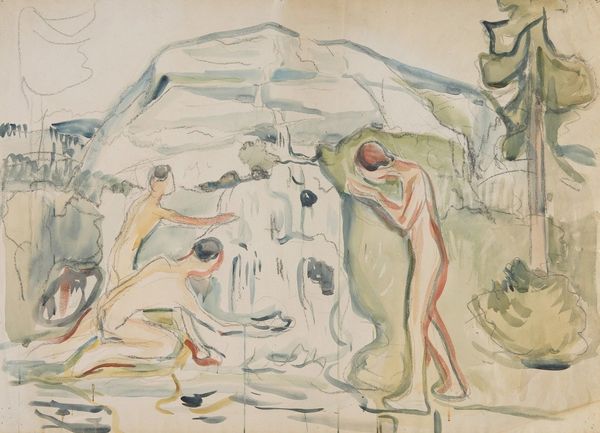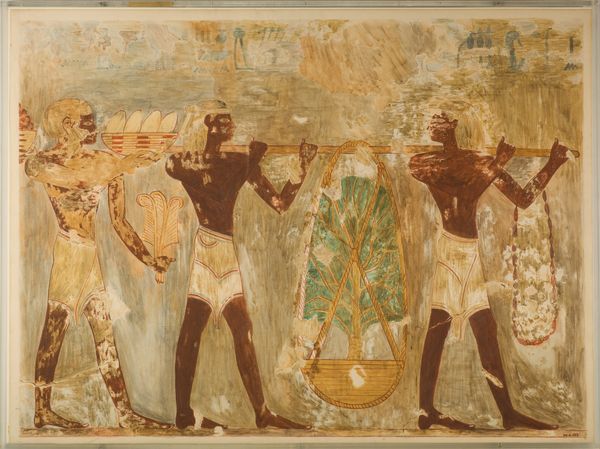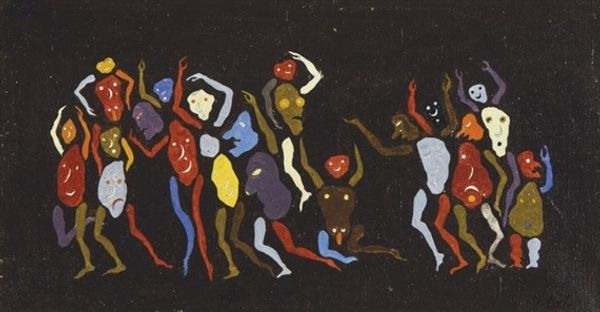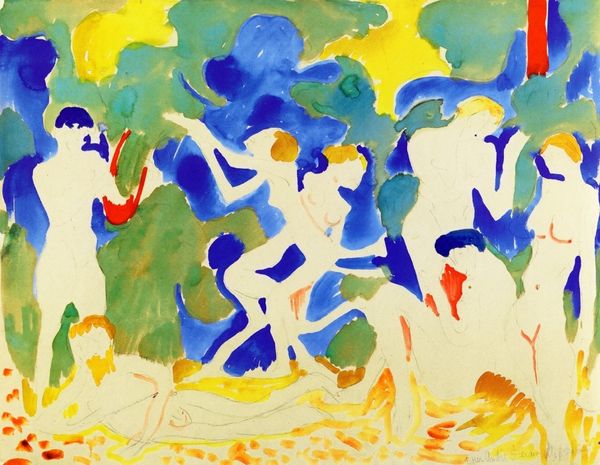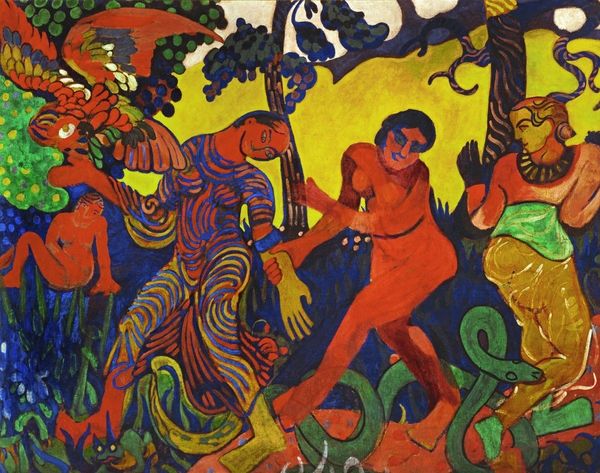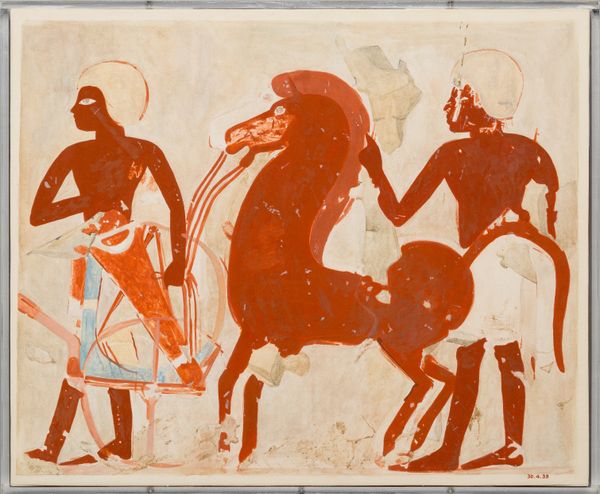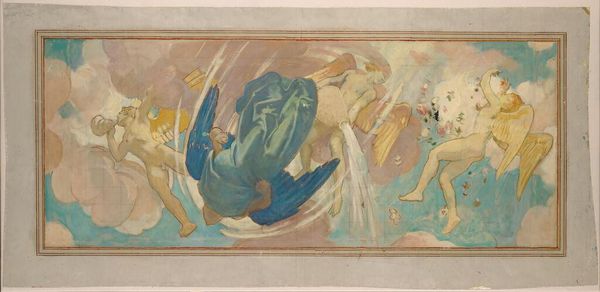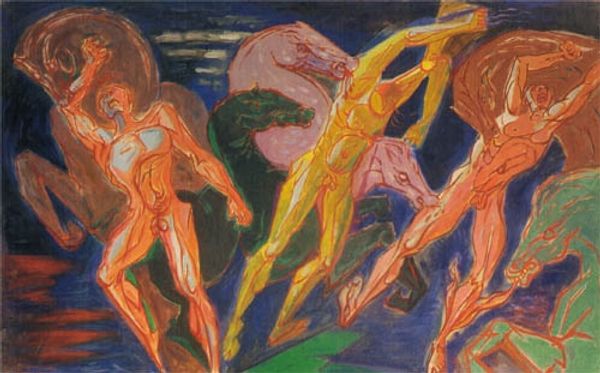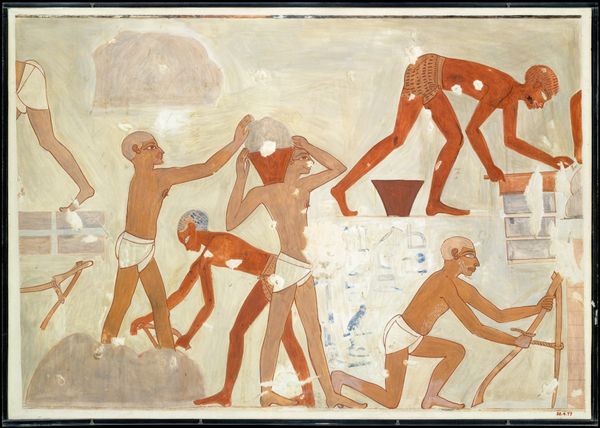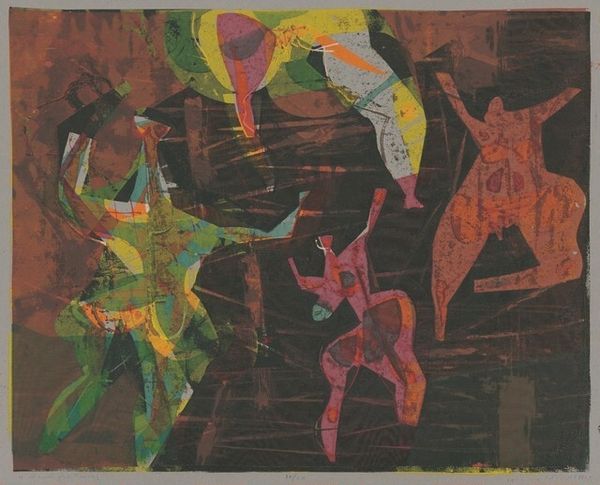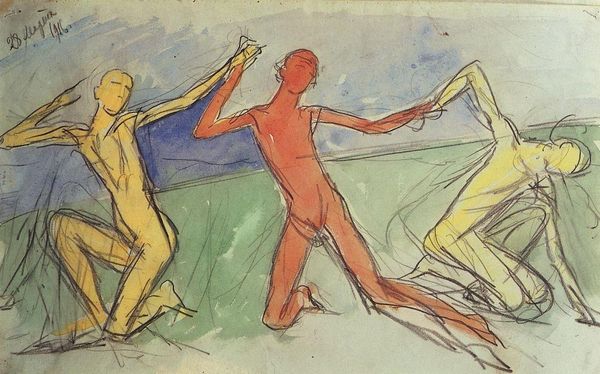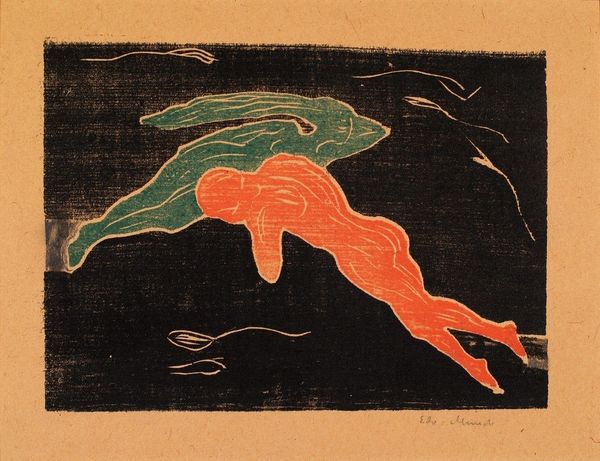
Dimensions: 130.5 x 213.5 cm
Copyright: Public domain
Curator: The color palette feels so raw and unexpected, it almost vibrates off the canvas. Editor: Koloman Moser completed "Clash of the Titans" in 1915. Its current location is unknown, and given the art's turbulent subject, perhaps that is appropriate. Curator: Yes, it's quite striking. Beyond the battle scene, I see these recurring male figures that call to mind ancient frescoes. They represent more than physical power, perhaps endurance and the cycles of conflict embedded in human existence. Editor: Absolutely, it is impossible to divorce the subject from the era in which it was painted: 1915, amidst the chaos of World War I. It presents the male body as weaponized, pushing past classical representations into an embodiment of existential struggle. It also asks us: Whose bodies are valued and whose are discarded in times of conflict? Curator: That adds a sobering dimension. The Titans themselves symbolize primordial power, struggle, and, ultimately, overthrow. Moser taps into that archetype. Their forms feel like specters, imbued with both glory and the looming spectre of their defeat, a visual metaphor for civilization's inherent tensions and self-destructive tendencies. The yellow hue, a double-edged symbol for intellect and cowardice, underscores that complexity. Editor: And isn’t the concept of a singular Titan flawed, especially considering what happened not so long before with colonization. I can’t but think of other marginalized communities in light of a Titan Clash concept. I do wonder, looking at Moser's color scheme—yellows, fleshy pinks, soft blues—if the piece challenges hypermasculine visual norms. Curator: Color and form here certainly evoke something elemental and archetypal, and, indeed, raise a more relevant discussion around how symbols have their basis in history and culture. These recurrent shapes speak to memory itself. Editor: Precisely. "Clash of the Titans" prompts us to confront power, not only on a physical level, but as an intricate system involving bodies, identities, histories and politics. Curator: I appreciate seeing beyond what's apparent and tapping into what visual echoes lie beneath. Editor: Likewise, engaging with history adds dimensions beyond aesthetics; it ignites conversations essential to comprehend our present and future.
Comments
No comments
Be the first to comment and join the conversation on the ultimate creative platform.

